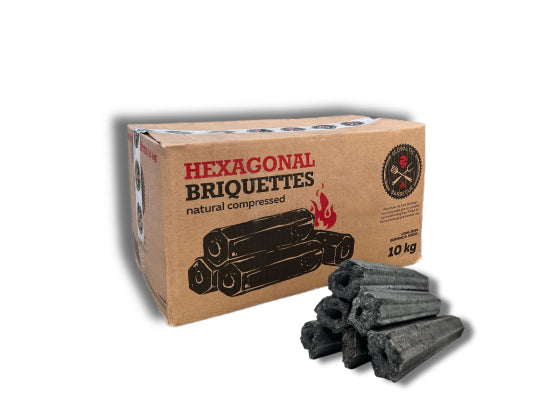In the world of barbecuing, precision is key. While traditional grilling methods rely heavily on experience and intuition, modern technology offers tools that can elevate your barbecuing skills to new heights. Among these, digital thermometers stand out as indispensable devices for ensuring your meat is cooked to perfection. This guide aims to demystify digital thermometers for BBQs, explaining their functions, benefits, and how to use them effectively.
Understanding Digital Thermometers
Digital thermometers are advanced tools designed to measure the internal temperature of food with precision. Unlike analogue thermometers, which can be hard to read and less accurate, digital thermometers provide a quick, clear reading on a digital display. They are particularly useful for barbecuing, where maintaining the right temperature is crucial for both safety and taste.
Types of Digital Thermometers
There are several types of digital thermometers available for BBQ enthusiasts:
- Instant-Read Thermometers: These provide a quick reading of the meat's temperature. Simply insert the probe into the thickest part of the meat, wait a few seconds, and you get an instant readout. They are ideal for quick checks but not suitable for leaving in the meat while it cooks.
- Leave-In Probe Thermometers: These are designed to remain in the meat throughout the cooking process. They come with a probe that is inserted into the meat and a cable connecting it to the digital display outside the grill or oven. Some models even come with wireless displays, allowing you to monitor the temperature without opening the grill.
- Wireless Remote Thermometers: These advanced thermometers come with a wireless receiver that can be carried around, letting you monitor the cooking process from a distance. They are perfect for those who like to entertain while grilling, as you can mingle with your guests without constantly checking the grill.
- Bluetooth/Wi-Fi Thermometers: The latest in BBQ technology, these thermometers connect to your smartphone via Bluetooth or Wi-Fi. Using a dedicated app, you can monitor the temperature in real-time, set alarms for specific temperatures, and even track the cooking progress over time.
Benefits of Using Digital Thermometers
Using a digital thermometer for BBQing offers numerous benefits:
- Precision Cooking: Achieving the perfect level of doneness is much easier with a digital thermometer. Whether you prefer your steak rare or well-done, you can ensure it’s cooked exactly to your liking.
- Food Safety: Undercooked meat can pose serious health risks. Digital thermometers help ensure your food reaches a safe internal temperature, reducing the risk of foodborne illnesses.
- Consistency: With a digital thermometer, you can replicate your best recipes every time. Consistency is key, especially when preparing meals for guests.
- Reduced Guesswork: No more cutting into the meat to check if it’s done, which can release precious juices and dry out the meat. A quick temperature check keeps the juices sealed in.
How to Use a Digital Thermometer
Using a digital thermometer correctly is crucial for accurate readings. Here’s a step-by-step guide:
- Calibration: Before using your thermometer, make sure it’s calibrated. Most digital thermometers come with instructions for calibration. This ensures accuracy, especially with new devices or after a long period of non-use.
- Placement: Insert the probe into the thickest part of the meat, avoiding bone and fat. Bones can conduct heat and give an inaccurate reading, while fat heats up faster than meat.
- Reading: For instant-read thermometers, wait a few seconds until the temperature stabilises. For leave-in thermometers, simply monitor the display.
- Target Temperatures: Familiarise yourself with the safe internal temperatures for various meats. For example, poultry should reach 75°C (165°F), while beef steaks can vary from 50°C (122°F) for rare to 70°C (158°F) for well-done.
- Cleaning: After use, clean the probe with hot, soapy water. Proper hygiene is essential to prevent cross-contamination.
Choosing the Right Digital Thermometer
When selecting a digital thermometer, consider the following factors:
- Accuracy and Speed: Look for thermometers with high accuracy and fast readout times. Reviews and product specifications can provide insight into performance.
- Durability: BBQing can be a rugged activity, so choose a thermometer that can withstand high temperatures and is water-resistant.
- Ease of Use: Consider features like backlit displays for nighttime grilling, large numbers for easy reading, and intuitive controls.
- Range: For wireless and Bluetooth thermometers, check the range. Ensure it covers the distance you need, especially if you plan to move around while grilling.
Additional Features: Some thermometers come with extra features like pre-set temperature alarms, timers, and even dual probes for monitoring two pieces of meat simultaneously.
Common Mistakes to Avoid
Even with the best digital thermometer, mistakes can happen. Here are some common pitfalls to avoid:
- Incorrect Probe Placement: Ensure the probe is placed correctly to get an accurate reading. Avoid bones, fat, and gristle.
- Not Allowing Meat to Rest: After cooking, let the meat rest for a few minutes. This allows the juices to redistribute, ensuring a moist and flavourful result.
- Ignoring Calibration: Regularly calibrate your thermometer to maintain accuracy. An uncalibrated thermometer can lead to overcooked or undercooked meat.
- Relying Solely on Time: Cooking times can vary based on many factors. Always use temperature as your guide rather than relying solely on cooking time.
Digital thermometers are a game-changer for BBQ enthusiasts, offering precision, safety, and consistency. By understanding how they work and how to use them effectively, you can elevate your grilling game and impress your guests with perfectly cooked meat every time. Whether you’re a seasoned pro or a novice griller, a digital thermometer is an investment that pays off with every delicious bite.





